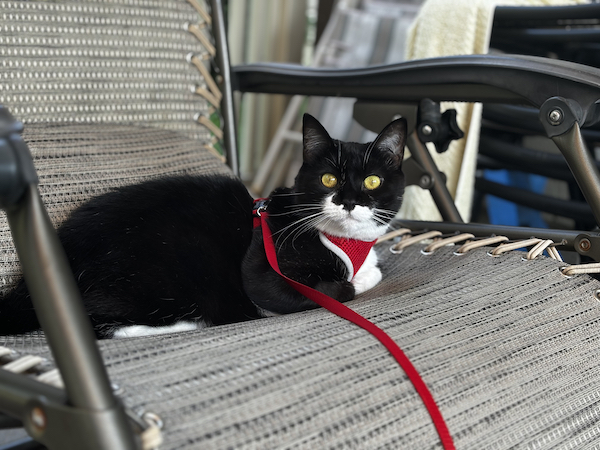Issue 103: Time Standards
This week, I'm going to tug on time. This follows the last item in last week's issue of Thursday Threads: The Clock that Made Power Grids Possible. Two years ago, I also published an issue about time, pointing to articles about eliminating the leap second, time standards on the moon, and observational humor on how we might explain our concept of time to aliens. That last one might form the thread that I tug on in the next issue because it treads on how whether our digital selves will stand the test of time.
This week:
- Paris' City-wide Synchronized Clock
- Time is very different in Kathmandu
- Moon GPS is Coming
- What Do A.M. and P.M. Stand For?
- This Week's Troublemaker: Pickle
Feel free to send this newsletter to others you think might be interested in the topics. If you are not already subscribed to DLTJ's Thursday Threads, visit the sign-up page. If you would like a more raw and immediate version of these types of stories, follow me on Mastodon where I post the bookmarks I save. Comments and tips, as always, are welcome.
Paris' City-wide Synchronized Clock
[The Paris Pneumatic Clock] system was created in 1880 by Austrian engineer Victor Popp – and just 5 years later, thousands of these clocks were placed all over the city – in hotels, train stations, houses, schools and public streets. We modeled this incredible system and the special machine at the heart of it, to show you how a series of underground pipes and mechanical clocks kept an entire city in sync.
The 8-minute video companion to the above article is great to watch, too. This is a marvel of engineering — synchronizing the clocks of a whole city through puffs of air traveling through pipes. This system—accurate to a minute—was just 35 years before the sub-second precision required to synchronize the power grid, as described at the end of last week's issue.
Time is very different in Kathmandu
Most of the world is on a whole number of hours before or after UTC. About a fifth of the world by population is on a half-hour offset from UTC; in particular, India is 5h30m ahead of UTC. Nepal is 5h45m ahead of UTC
I first encountered this when setting up a Zoom meeting for colleagues in Kathmandu. While most countries neatly set their clocks to full hour offsets (or, as noted in the quote above, a half-hour offset), Nepal ticks to its own clock with a 5-hour and 45-minute offset from UTC. It's as if Nepal took a look at the standard time zones and said, "Why be ordinary when you can add a twist?" Imagine trying to schedule a call back home, perplexed as you reconcile not just the time difference but—and here's the kicker—those extra 15 minutes that make Nepal unique.
Moon GPS is Coming
NASA and its partners in Europe and Japan are developing lunar satnav concepts that could be deployed by the end of the 2020s. In July, China’s National Space Administration (CNSA) unveiled its plans for a constellation of 21 communications and navigation satellites to support its lunar aspirations.
The Thursday Threads issue two years ago talked about the need to keep accurate on the moon. Following an announcement from the White House early in 2024 directing NASA to create a time standard for the moon, U.S., European, and Chinese efforts are underway to make that happen.
What Do A.M. and P.M. Stand For?
If you know how to tell time, you probably understand and use a.m. and p.m., and you might even know the terms come from Latin phrases. But do you know what exactly those phrases are, or what they mean in English?
File this away for use at parties...
This Week's Troublemaker: Pickle

So let's talk about the third cat in the house (after Alan in the last issue and Mittens in the issue before). This is Pickle, a black-and-white Tuxedo cat with a drive for food that I've never witnessed in another cat. Two stories from one recent afternoon: First, when my wife got home from the grocery store, Pickle grabbed the bag of doughnuts from a canvas bag and made off with a big chunk of a long-john. Then, when she was fixing dinner, Pickle jumped on the counter and made off with a hunk of steak. My wife chased her around the dining room table, through the living room, and up the stairs to my daughter’s room. I rushed to follow, and we trapped Pickle between the headboard and the wall. My wife thinks the cat woofed down a sizable chunk of meat before we could catch her.
That, ladies and gentlemen, is Pickle.